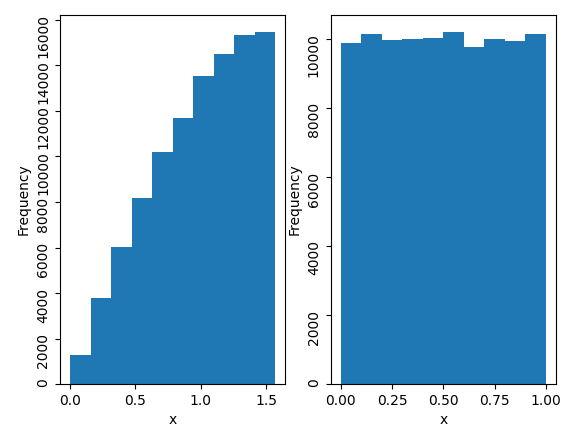The question doesn't require a specific programming language, which is fine, but I noted that the OP's plot looks like the default style of matplotlib. @jbowman has given a useful r implementation. Here is a similar python implementation in case the OP would like to continue their project in python.
First we can define a vectorized function rsin.
import numpy as np
def rsin(n):
results = np.zeros(n)
for i in range(n):
while True:
u = np.random.uniform(0, 2*np.pi)
u2 = np.random.uniform()
if u2 <= np.abs(np.sin(u)):
results[i] = u
break
return results
And then we can plot the results using matplotlib.
import matplotlib.pyplot as plt
plt.hist(np.cos(rsin(10000)), bins=20)
plt.show()
Which produces the following plot:
@schotti's approach can be given (ignoring some of the style elements) in python as follows.
import matplotlib.pyplot as plt
x = np.arccos(np.random.uniform(size=10**5))
y = np.cos(x)
fig, axes = plt.subplots(1,2)
axes[0].hist(x)
axes[1].hist(y)
for axis in axes:
axis.set_xlabel('x')
axis.set_ylabel('Frequency')
axis.tick_params('y', labelrotation=90)
plt.show()


